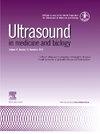人工智能模型的开发与验证,以提高初级超声医师对深度浸润性子宫内膜异位症的诊断。
IF 2.4
3区 医学
Q2 ACOUSTICS
引用次数: 0
摘要
目的:本研究旨在开发并验证基于超声(US)视频和图像的人工智能(AI)模型,以提高初级超声医师对深度浸润性子宫内膜异位症(DE)的诊断能力。方法:回顾性研究资料来源于接受过超声检查并有DE的女性患者,超声图像记录分为两部分。首先,在模型开发阶段,使用YOLOv8训练AI-DE模型来检测盆腔DE结节。随后,通过比较初级超声医师在有和没有人工智能模型辅助的情况下的诊断表现,评估其临床适用性。结果:AI-DE模型使用248张图像进行训练,表现出较高的性能,在测试集上的mAP50 (IoU阈值0.5下的平均精度)为0.9779。共147张图像用于评估诊断性能。在AI-DE模型的帮助下,初级超声医师的诊断性能得到了提高。受试者工作特征(AUROC)曲线下面积由0.748 (95% CI, 0.624-0.867)改善至0.878 (95% CI, 0.792-0.964);p < 0.0001),从0.713 (95% CI, 0.592-0.835)到0.798 (95% CI, 0.677-0.919;p < 0.0001)。值得注意的是,两种超声医师的敏感性均显著提高,最大增幅从77.42%提高到94.35%。结论:基于US图像的AI-DE模型在DE检测方面表现良好,可显著提高初级超声医师的诊断水平。本文章由计算机程序翻译,如有差异,请以英文原文为准。
Development and Validation an AI Model to Improve the Diagnosis of Deep Infiltrating Endometriosis for Junior Sonologists
Objective
This study aims to develop and validate an artificial intelligence (AI) model based on ultrasound (US) videos and images to improve the performance of junior sonologists in detecting deep infiltrating endometriosis (DE).
Methods
In this retrospective study, data were collected from female patients who underwent US examinations and had DE. The US image records were divided into two parts. First, during the model development phase, an AI-DE model was trained employing YOLOv8 to detect pelvic DE nodules. Subsequently, its clinical applicability was evaluated by comparing the diagnostic performance of junior sonologists with and without AI-model assistance.
Results
The AI-DE model was trained using 248 images, which demonstrated high performance, with a mAP50 (mean Average Precision at IoU threshold 0.5) of 0.9779 on the test set. Total 147 images were used for evaluate the diagnostic performance. The diagnostic performance of junior sonologists improved with the assistance of the AI-DE model. The area under the receiver operating characteristic (AUROC) curve improved from 0.748 (95% CI, 0.624–0.867) to 0.878 (95% CI, 0.792–0.964; p < 0.0001) for junior sonologist A, and from 0.713 (95% CI, 0.592–0.835) to 0.798 (95% CI, 0.677–0.919; p < 0.0001) for junior sonologist B. Notably, the sensitivity of both sonologists increased significantly, with the largest increase from 77.42% to 94.35%.
Conclusion
The AI-DE model based on US images showed good performance in DE detection and significantly improved the diagnostic performance of junior sonologists.
求助全文
通过发布文献求助,成功后即可免费获取论文全文。
去求助
来源期刊
CiteScore
6.20
自引率
6.90%
发文量
325
审稿时长
70 days
期刊介绍:
Ultrasound in Medicine and Biology is the official journal of the World Federation for Ultrasound in Medicine and Biology. The journal publishes original contributions that demonstrate a novel application of an existing ultrasound technology in clinical diagnostic, interventional and therapeutic applications, new and improved clinical techniques, the physics, engineering and technology of ultrasound in medicine and biology, and the interactions between ultrasound and biological systems, including bioeffects. Papers that simply utilize standard diagnostic ultrasound as a measuring tool will be considered out of scope. Extended critical reviews of subjects of contemporary interest in the field are also published, in addition to occasional editorial articles, clinical and technical notes, book reviews, letters to the editor and a calendar of forthcoming meetings. It is the aim of the journal fully to meet the information and publication requirements of the clinicians, scientists, engineers and other professionals who constitute the biomedical ultrasonic community.

 求助内容:
求助内容: 应助结果提醒方式:
应助结果提醒方式:


